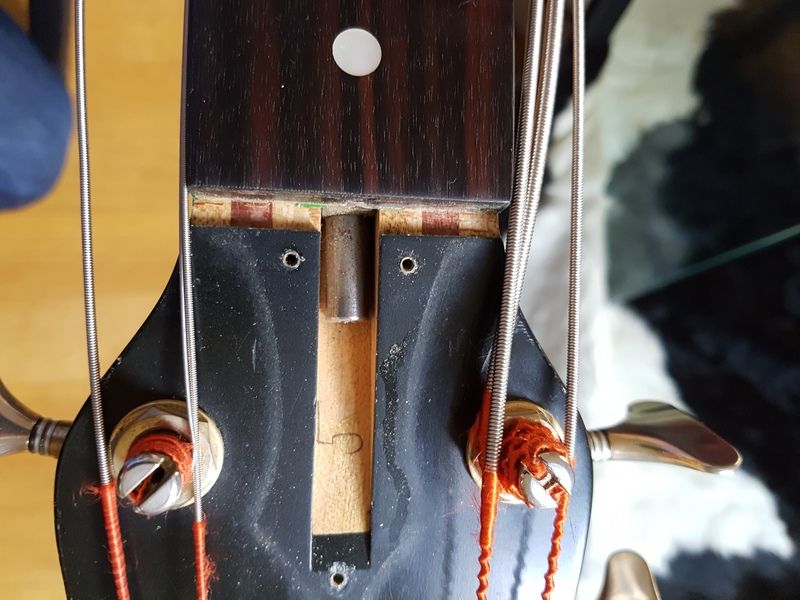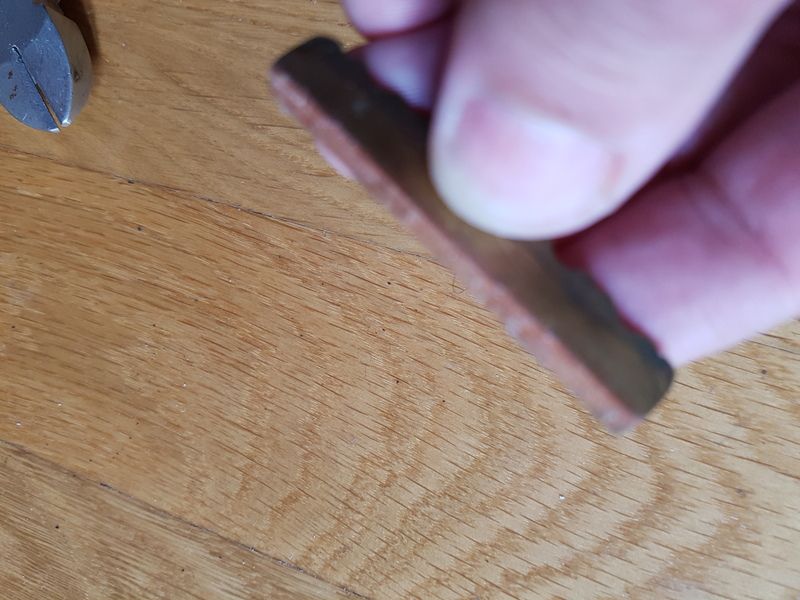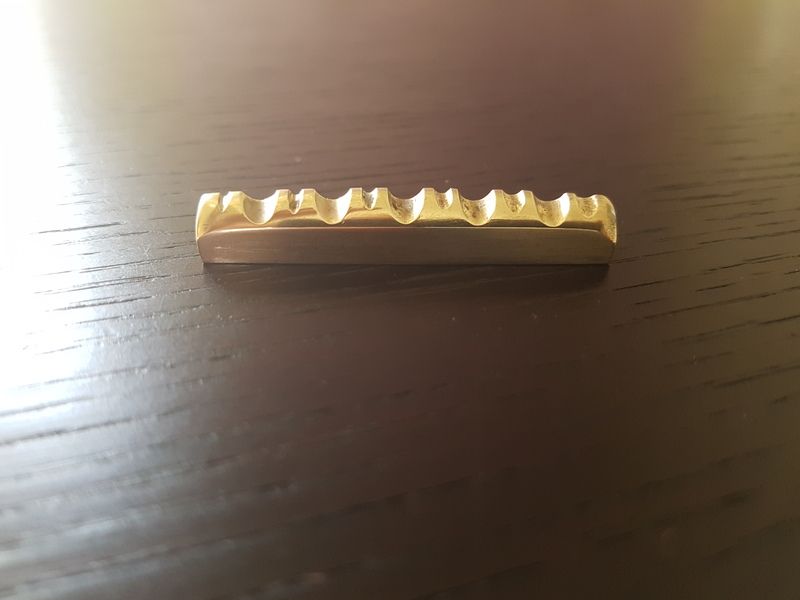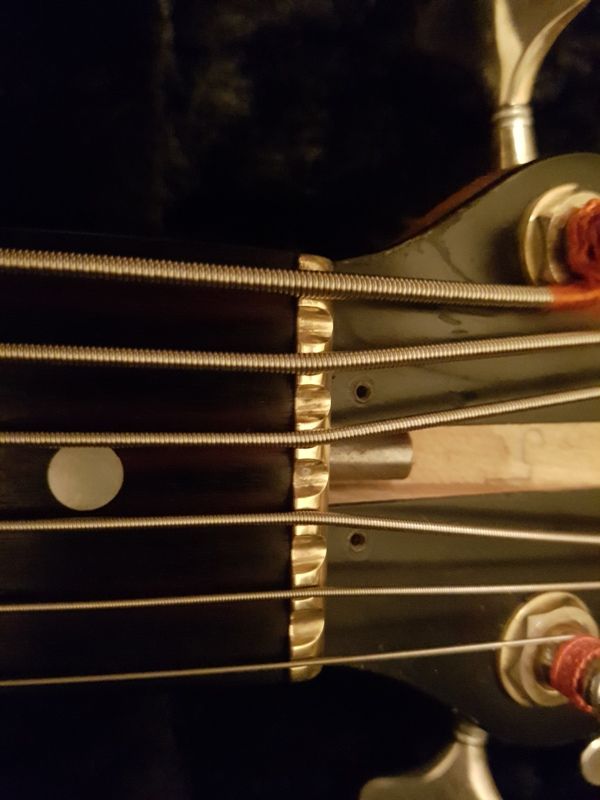
 |
|
|
|
#1
|
||||
|
||||
|
I would need the bass here to make any kind of decision or estimate in reality.
|
|
#2
|
|||
|
|||
|
I made it!!!
Today I took the strings off to see what's goin' on with the nut and, to my surprise, the nut just came off as I lightly pull it! It was just seated in the slot without any glue... no harm done to the fingerboard or to the headstock veneer!  As I suspected a tiny strip of wood (about 0.50 mm) was glued to the bottom of the nut..  As Ken suggested this was probably done because the previous owner was a heavy handed groover and liked higher action in the first five frets region. It also explain the wear on those frets and the fact that the finish in that area of neck back is totally gone... Anyway, I cut off the wood veneer with a razor blade and then sanded off any glue residual with a fine sandpaper. Here's how the bottom of the nut looked like as I finished the job..  A nice rub of metal polish and here's the nut in its all original shining glory...  Fitted the nut in its slot, strung the bass and... voil√*... PERFECT. I also discovered that the nut wasn't damaged or sanded in any way. That small gap on the B string side was because it slightly shifted when it was installed. So I put under slight tension the outer strings first, perfectly centered the nut and then strung all the strings to pitch. Worked like a charm!  Now, the action dropped down of 0.50 mm and the whole thing plays like butter all across the fingerboard with no fret buzz at all! I'll probably wait a little and then will raise the bridge saddle a hair to better suit my right hand touch. I'm soooo happy!!! |
|
#3
|
||||
|
||||
|
Here, we spot glue the nut in with Elmers white School Glue. Easy to take off if needed. Also, after WE polish the nut by hand, we spray it with can lacquer or acrylic. This helps prevent oxidation of the brass over time.
Good job! |
|
#4
|
|||
|
|||
|
Congrats on that cool bass. You didn't mention having done any fret work, though you probably at least cleaned them. It is excellent that you got good action. It is a testament to the build quality and materials. That bass was played hard and still plays well with a set up and cleaning. Nice work.
|
|
#5
|
|||
|
|||
|
Thanks! I haven't done any fret cleaning myself but I bought the bass from the Uk shop where luthiers Martin Petersen and John Chapman make their Sei Custom Basses, so maybe the bass had a fret cleaning and basic setup there before it was shipped to me.
The first four/five frets have wear from the previous player as I explained before, but still the bass have an amazing low action and no buzz... truly a testament to the exquisite craftmanship behind Smith basses. |
|
#6
|
|||
|
|||
|
Ken, given that my bass has the lacquer finish and that it 's gone leaving bare wood in many parts, especially the neck, which product you'll recommend to use for cleaning and polishing?
Any reccomendation for tbe bare wood areas? Also, I have some green grime build up into some parts of the bridge and on two of the screws that secure the bridge to the body. Should I use metal/brass polish on it and should I replace the bridge screws? |
|
#7
|
||||
|
||||
|
Quote:
Tarnished screws may have lost their plated covering so nothing will put that back. Only new screws can look new. Rubbing the gold in anyway might rub the gold off so be careful. We do not send old parts out for re-plating. |
 |
| Currently Active Users Viewing This Thread: 3 (0 members and 3 guests) | |
| Thread Tools | |
| Display Modes | |
|
|